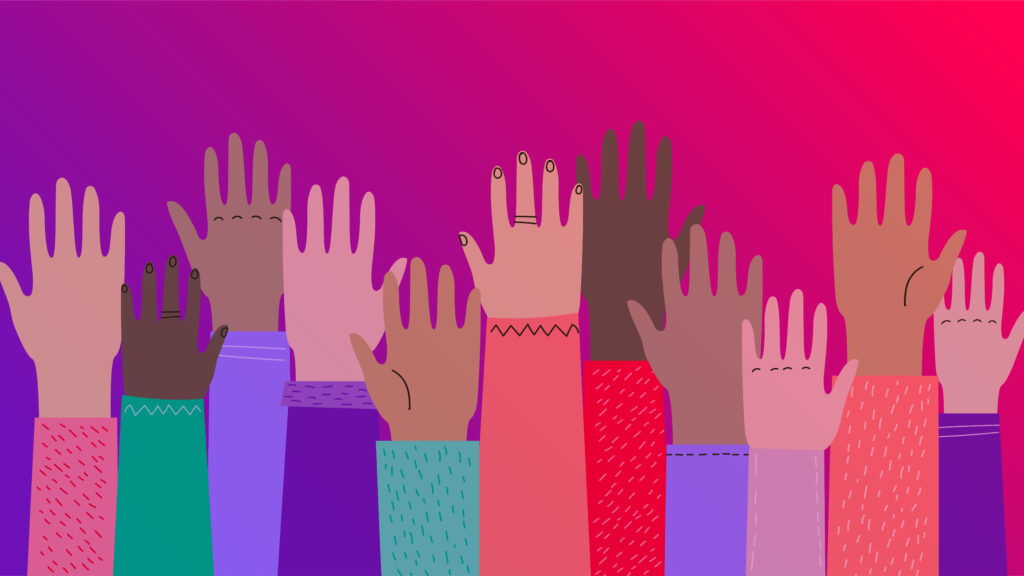Advancing health equity requires focused efforts to address the underlying disparities that affect people’s health and well-being. Implementing effective patient communication strategies can help move the needle forward.
At a Glance:
- Health equity involves addressing disparities in healthcare access, and effective patient communication is crucial for bridging knowledge, language, and cultural gaps.
- Health inequities have far-reaching implications, causing poorer health outcomes and unnecessary spending.
- Effective patient communication, facilitated by digital platforms, can reduce health disparities, while also considering social determinants of health, cultural competence, and diverse patient preferences in building trust and advancing health equity.
Understanding Health Equity and the Role of Communication
In an ideal world, every individual would have equal access to quality healthcare, regardless of their socio-economic status, race, or background. Unfortunately, this is not the reality we live in.
But health equity goes beyond merely providing equal access to healthcare; it’s about addressing the underlying disparities that affect people’s health and well-being. This involves dismantling barriers and eliminating systemic injustices that contribute to healthcare disparities.
While policies and resources play a crucial role in achieving health equity, providing effective patient communication is equally vital. This not only encompasses clear and empathetic patient-provider conversations but also extends to all healthcare interactions – from educational materials and public health campaigns to community outreach initiatives.
By understanding the nuances of patient communication, healthcare professionals can bridge gaps in knowledge, language barriers, cultural differences, and other factors that contribute to health inequities. Effective communication ensures that patients are empowered with accurate information about their conditions, treatment options, preventive measures, and resources available to them. To communicate effectively, providers should consider developing a health equity plan in conjunction with a robust patient communication strategy to make significant strides in the path to health equity.
The Impact of Health Inequities on Patient Outcomes and Access to Care
Before we dive into the power of effective patient communication, let’s take the time to acknowledge the effect health inequities have on our patient populations and the healthcare ecosystem at large.
A pressing issue within our healthcare system, health inequities have profound implications to patient outcomes, access to care, the economy and much more. The consequences are far-reaching, leading to poorer health outcomes for vulnerable populations and exacerbating existing disparities in access to quality care. In fact, they push 100 million people into poverty each year – preventing at least half of the world’s population from getting the care they need. Additionally, health inequities take a huge hit to the U.S. healthcare system, costing the U.S. billions of dollars each year and raising the cost of healthcare for everyone.
According to the Deloitte Health Equity Institute report, health inequities account for roughly $42 billion in lost productivity annually and add about $15.6 billion in unnecessary spending associated with diabetes and $2.4 billion in treating asthma. These costs are the result of delayed care, access barriers, missed diagnoses and limited access to preventive services and scientific advances.
It’s crucial that we address these issues head-on to not only build a more equitable healthcare system where every individual has the opportunity to achieve optimal health regardless of their socioeconomic background or demographic characteristics but also to reduce unnecessary spending.
The Power of Effective Patient Communication in Reducing Health Disparities
Harnessing the immense power of effective patient communication is undoubtedly a game-changer when it comes to reducing health disparities. The impact of clear and meaningful dialogue between healthcare providers and patients cannot be overstated. It holds the key to bridging the gap between different socio-economic backgrounds, cultural diversities, and language barriers that often contribute to unequal access to healthcare services. By employing empathetic language, active listening, and fostering a safe space for open discussion, healthcare professionals can empower their patients with knowledge, trust, and confidence.
In order to deliver this type of dialogue, providers should look to digital patient communication platforms. With a variety of features and functionalities, these can enable providers to address care gaps by actively reaching out to potential new patients in the community, ensuring existing patients maintain their appointments and encouraging patients to get back into the care setting. When utilized efficiently, patient communication platforms can simplify the retrieval of medical records, disseminate educational materials, and encourage patients to schedule preventive screenings, wellness check-ups, or regular visits.
How One Customer Used Artera to Reach New Patients: When Community Health Centers of the Central Coast found Artera, they decided to tap into the platform largely as a campaign outreach tool (Community Outreach Model) to recruit and retain Medicaid patients by pushing out text messages. Outside of the initial “welcome” message to patients, messages cover everything from annual check-ups to dental exams, cancer screenings, and more. Using this
outreach approach to new patients – or those who haven’t been seen in 12 months – has led to tremendous success at CHC. In just one year (June 2022 – June 2023), they had a recruitment rate of 30 percent, meaning 30 percent of patients who were reached out to made – and kept – an appointment. CHC ultimately scheduled ~20,000 appointments for recruited Medicaid patients within the last year, bringing new patients into the care setting.
Addressing Social Determinants of Health through Patient Outreach
Frequently, individuals in vulnerable circumstances find themselves slipping through the gaps in the healthcare system. Thankfully, healthcare leaders today are increasingly thinking about their patients beyond the confines of in-person care settings by addressing social determinants of health – or the conditions in which people are born, grow, live, work and age that shape health. This is precisely where technology – and a health equity plan – can step in to offer valuable assistance.
By using technology, such as a patient communication platform, providers can learn more about the communities in which they serve. Therefore, they can adapt the technology to allow greater opportunities for patients to connect in the way that works best for them – based on their environment. For example, patients in underserved communities may frequently work full-time, so it’s essential they have more convenient methods of communication with their provider, such as conversational messaging. This allows patients to reach out on their own time and enables an open line of communication where patients can ask questions, receive advice, or seek care as a first line of defense instead of going to the ER.
When providers can adapt their strategies more to account for various patient population groups, environments, and circumstances, they can provide a more inclusive approach to communication, thus helping to advance health equity.
How One Customer Leveraged Artera to Eliminate Barriers to Care: One Children’s Hospital in the Midwest leveraged Artera’s Conversation Builder, ChatAssist AI, to engage with patients who did not show up for their appointment to better understand the “why.” Using Artera Analytics Plus, they quickly quantified and analyzed the responses patients provided, which led them to a surprising insight: many patients were not showing up for their appointments for two reasons 1) they did not have transportation to the appointment or 2) they did not own a coat – a significant deterrent given the severe weather this region experienced during the winter months.
The children’s hospital then identified the patients and reached out to coordinate transportation and provide winter coats to these patients. This drove meaningful interactions with their patient population, removed barriers to care and reduced no-shows at their facilities.
Breaking Down Barriers: Overcoming Language and Cultural Differences
When thinking through a patient communication strategy and a health equity plan, it must be critical for providers to recognize the unique needs of different populations, ensuring culturally competent care. While this involves training healthcare providers to understand and respect cultural differences, it also means taking advantage of the many features a patient communication platform offers that hone in on diversity and distinct patient information.
For example, Artera offers 109+ languages which enables providers to engage their diverse patient population in their preferred language. This means more patients can be reached
With Preferred Name, another recent Artera enhancement, patients can be communicated with by their Preferred Name. Whether it’s a cultural factor or personal change, there are many reasons patients may go by a different name than the one on their birth certificate. By enabling this through patient communication, it helps to support organizations in remaining sensitive to patient preferences while fostering meaningful connections with patients – helping them to build trust with the healthcare system.
Championing Patient Communication to Advance Health Equity
Promoting and advancing health equity is top-of-mind for all healthcare leaders – ranking in the top five list of priorities for health executives. That being said, only 18 percent say they have a well-defined strategy to support their efforts. In order to make significant strides in achieving health equity, we must ensure we’re taking similar steps as we would to target any greater business issue.
This involves crafting comprehensive health equity plans – in association with effective patient communication strategies – that address access to care, social determinants of health, cultural competence, community engagement, and data-driven strategies. These should include goals, metrics, and milestones. To see meaningful results and stay on course, providers should measure health equity through tools like the health equity index and health equity metrics.
Above all, there exists opportunities to align health equity plans and comprehensive patient communication strategies. Providers today should take advantage of the technology they have to make healthcare equitable for all.



